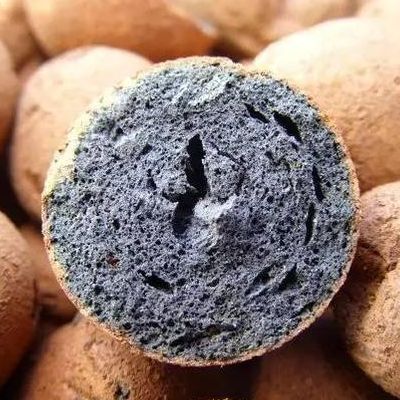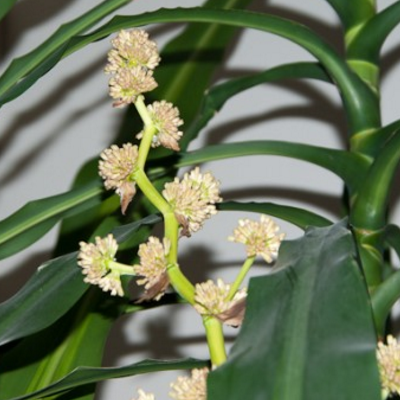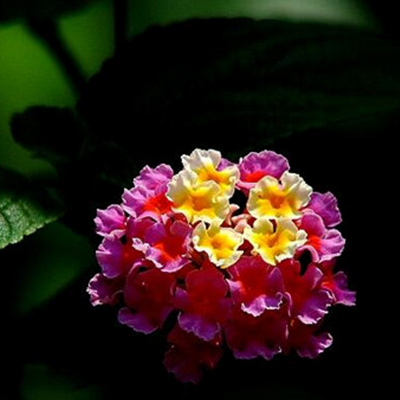How to prevent the rotten roots of potted plants? what are the root media?
Potted plants, this is a lot of people are super like, this potted plant is so attractive, potted plants are super easy to rot roots, how to prevent potted plants rotting roots? What are the anti-rotting root media of potted plants:

Ceramsite
Ceramsite is a kind of ceramic granular stone fired at high temperature. there are many holes in the particles, which have good drainage and water retention. It can keep the soil loose and breathable, avoid the rotten roots of the basin soil, and spread it on the bottom of the basin. It can also be placed on the soil surface.
It is OK to spread ceramsite directly at the bottom of the basin. According to the depth of the container, it is generally about 3-5 cm. The potted soil laid on ceramsite should have a certain amount of granular stone, which can be common vermiculite, river sand or perlite. It can better increase the looseness and air permeability of the soil.
2. Sawdust
In the cultivation of Cymbidium seeds, fresh sawdust can be used, prepare mature Cymbidium seeds, then spread sawdust, put the seeds on top, keep sawdust slightly moist, cover 3-4 cm thickness of fresh sawdust, can promote seed germination.
Of course, if it is used to grow flowers, then it still needs mature sawdust, and the sawdust made from logs is the best after it is mature, they are all very good flower-growing materials.
If you are in a hurry to use fresh sawdust, you can boil the sawdust in boiling water for half an hour, then put it in a ventilated place to dry, and then put it on the bottom of the basin a few days later, so it can be used as a slow fertilizer.
III. Honeycomb cinder block
Now some small city stalls and vendors often use these honeycomb coals, which will turn into useless cinders when they are completely burned. at this time, we can collect them, rinse them with water, soak them for three days, and then break them.
The size of the particles can be selected according to the purpose. If they are used for laying at the bottom of the basin, you can choose a slightly larger one to mix into the soil, which is usually 3-5 mm. After smashing, you can use your own screening.
Note: pay attention to remove some black particles, which are cinders that have not been completely burned and should be removed. The main purpose of soaking the cinder is to remove sulfur and avoid alkali in the soil.
Charcoal
Charcoal is the residue after the branches pass through, it can also be added to the soil, it can increase the air permeability and drainage of the soil, can also have a certain bactericidal effect, and can well prevent plant roots from rotting.
After the charcoal is broken, the basin bottom can be added in time, which is very suitable for raising flowers such as hanging orchids or gentleman orchids, and even small pieces of charcoal can be mixed into the soil to be used as a good granular soil.
5. Broken tiles
The broken tiles that will be used in daily life are very good cushion media, which can prevent the basin soil from blocking the drainage hole and preventing the basin soil from stagnant water and rotting roots.
Of course, ceramsite can also be used instead, but the broken tiles can be placed in the position of the drain hole, which is still more practical.
This is the end of the question about the rotting roots of plants. If you have learned a lot, come and learn as soon as possible.
What about the rotten roots of potted plants? how to prevent and cure the rotten roots of potted plants?
Sometimes the rotten roots of potted plants can not be blamed for watering too frequently, sometimes the same plants are watered too frequently, but the frequency of watering varies with different soils. if green apples are planted on sandy soil, they can be watered once every 3 days, and if they are planted on practical garden soil, it will take 5 to 7 days to water them.
Soil requirements of different plants
1. Rotten roots of potted plants: Cymbidium
Chlorophyllum is a plant that can endure drought and waterlogging, but it can not stand long-term stagnant water in basin soil, so the soil with orchid must be loose, breathable and well drained, and ensure that the soil is slightly moist and not stagnant in a warm environment. If the soil is hardened, it needs to loosen the soil or change the basin in time, it is not very picky about the soil, and it can grow well with ordinary garden soil with river sand.
Like the pot below, if the pot is not changed in time, it will have no place to grow and it is easy to accumulate water and rot its roots.
It is suggested that the bottom of the flowerpot be covered with broken tiles, stones, cinders and other large particles.
It is covered with a layer of river sand, and it can be used at the construction site. The top layer is covered with nutritious soil. Nutrient soil can choose humus soil, or a mixture of humus soil and peat soil.
2. Rotten roots of potted plants: rich trees
The rich tree is a plant that is relatively easy to maintain, the key is to pay attention to less watering, keep the light bright, the environment is ventilated, the basin soil does not accumulate water, too much watering will rot the root, and the stem will not be saved when the stem becomes soft.
Potted wealth trees like the following are the most common. Grass covered with a layer of plastic on the soil is actually not conducive to plant growth. You don't know whether the soil is dry or not. It is impractical to keep the soil slightly dry in winter.
Soil: you can directly use rotten leaf soil + garden soil and river sand, with a proportion of 5:3:2, you can put broken tiles on the bottom of the basin, covered with some ceramsite, the decorative effect is not bad.
3. Rotting roots of potted plants: Magnolia
The rhizome of the orchid, as shown in the following picture, is an expanded fleshy root, which is easy to rot if it is watered too much. In winter, the soil should be kept slightly dry, and the basin soil should be dried and then watered.
If you want the orchid to grow well, it is best to use rotten leaf soil with river sand, which can be mixed with some sawdust, the ratio is rotten leaf soil + river sand at 7:3, broken tiles on the basin bottom cushion, you can give a little rotten cake fertilizer as base fertilizer under the basin soil, so that the gentleman orchid can grow flowers and leaves brightly.
Rotten roots of potted plants: 4. Orchids
Orchids like loose, well-ventilated and well-drained soil. In addition to choosing a more breathable tile basin, orchids also need to choose soils with loose soil and rich humus.
You can see that the orchid below grows well, in addition to mixing some gravel in the soil, but also on the basin bottom with some broken plastic foam, drainage and air permeability is very good, but its water retention is relatively poor.
Using plastic foam instead of broken tiles is a new technique, but the effect is quite good, but also to ensure that the orchid is not so easy to rot.
5. Rotten roots of potted plants: succulent plants
When many friends first started to raise succulent plants, they thought that they should be watered as soon as they were planted. This is a complete mistake. The leaves of succulent plants are covered with water, especially the succulent plants that have just been bought online (no online shopping in areas below 0 degrees in winter). The roots have withered, and at this time you need to cut off the withered roots and hang them in the shade and ventilation for 1 day or 2 days. Add a little damp soil (peat + perlite mixed at 1:1) to the basin, then wait until the soil is completely dry before watering.
The soil can be covered with some volcanic stones or other granular stones, and some older succulent plants can be mixed with some granular stones (including red jade soil, deer marsh soil, river sand, Maifan stone, etc.). Before medium cultivation, you can soak it in carbendazim solution first. Make sure that your succulent plants will grow well in the future, and that there will be few diseases and insect pests.
Potted plants have rotten roots, and it is important to mix soil and change pots.
Sometimes the rotten roots of plants can not only be blamed for watering too frequently, sometimes the same plants, but with different soils, the frequency of watering should also be changed. if green pineapple is planted on sandy soil, it can be watered once every 3 days, and if it is planted on practical garden soil, it will take 5 to 7 days to water.
Soil requirements of potted plants
1. Hanging orchid
Chlorophyllum is a plant that can endure drought and waterlogging, but it can not stand long-term stagnant water in basin soil, so the soil with orchid must be loose, breathable and well drained, and ensure that the soil is slightly moist and not stagnant in a warm environment. If the soil is hardened, it needs to loosen the soil or change the basin in time, it is not very picky about the soil, and it can grow well with ordinary garden soil with river sand.
Like the pot below, if the pot is not changed in time, it will have no place to grow and it is easy to accumulate water and rot its roots.
Huahua suggests laying broken tiles, stones, cinders and other large particles at the bottom of the flowerpot.
It is covered with a layer of river sand, and it can be used at the construction site.
The top layer is covered with nutritious soil. Nutrient soil can choose humus soil, or a mixture of humus soil and peat soil.
2. Fortune tree
The rich tree is a plant that is relatively easy to maintain, the key is to pay attention to less watering, keep the light bright, the environment is ventilated, the basin soil does not accumulate water, too much watering will rot the root, and the stem will not be saved when the stem becomes soft.
Potted wealth trees like the following are the most common. Grass covered with a layer of plastic on the soil is actually not conducive to plant growth. You don't know whether the soil is dry or not. It is impractical to keep the soil slightly dry in winter.
With soil, you can directly use rotten leaf soil + garden soil and river sand, with a proportion of 5:3:2, you can put broken tiles on the bottom of the basin, and cover it with some ceramsite, the decorative effect is not bad.
3. Gentleman's orchid
The rhizome of the orchid, as shown in the following picture, is an expanded fleshy root, which is easy to rot if it is watered too much. In winter, the soil should be kept slightly dry, and the basin soil should be dried and then watered.
If you want the orchid to grow well, it is best to use rotten leaf soil with river sand, which can be mixed with some sawdust, the ratio is rotten leaf soil + river sand at 7:3, broken tiles on the basin bottom cushion, you can give a little rotten cake fertilizer as base fertilizer under the basin soil, so that the gentleman orchid can grow flowers and leaves brightly.
4. Orchids
Orchids like loose, well-ventilated and well-drained soil. In addition to choosing a more breathable tile basin, orchids also need to choose soils with loose soil and rich humus.
You can see that the orchid below grows well, in addition to mixing some gravel in the soil, but also on the basin bottom with some broken plastic foam, drainage and air permeability is very good, but its water retention is relatively poor.
Using plastic foam instead of broken tiles is a new technique, but the effect is quite good, but also to ensure that the orchid is not so easy to rot.
5. Succulent
When many friends first started to raise succulent plants, they thought that they should be watered as soon as they were planted. This is a complete mistake. The leaves of succulent plants are covered with water, especially the succulent plants that have just been bought online (no online shopping in areas below 0 degrees in winter). The roots have withered, and at this time you need to cut off the withered roots and hang them in the shade and ventilation for 1 day or 2 days. Add a little damp soil (peat + perlite mixed at 1:1) to the basin, then wait until the soil is completely dry before watering.
The soil can be covered with some volcanic stones or other granular stones, and some older succulent plants can be mixed with some granular stones (including red jade soil, deer marsh soil, river sand, Maifan stone, etc.). Before medium cultivation, you can soak it in carbendazim solution first.
Make sure that your succulent plants will grow well in the future, and that there will be few diseases and insect pests.
- Prev

What if the Brazilian wood grows too high? what if the leaves turn yellow?
Brazilian wood, this kind of plant is liked by many people, and it is super good-looking at home. What if this Brazilian wood grows too high? What if the Brazilian wood leaves turn yellow: what if the Brazilian wood grows too high: if your Brazilian wood grows too tall, at this time, you need to prune the trees.
- Next

Is the five-colored plum poisonous? what if the leaves turn yellow?
Five-colored plum, this is a lot of people are super like, this five-colored plum is so likeable, five-colored plum poisonous? Five-color plum leaves yellow how to do: five-color plum poisonous: there was a pot of five-color plum in front of me, I cherished, with my hands to touch, as a result, I went to the hospital! The doctor told me
Related
- Fuxing push coffee new agricultural production and marketing class: lack of small-scale processing plants
- Jujube rice field leisure farm deep ploughing Yilan for five years to create a space for organic food and play
- Nongyu Farm-A trial of organic papaya for brave women with advanced technology
- Four points for attention in the prevention and control of diseases and insect pests of edible fungi
- How to add nutrient solution to Edible Fungi
- Is there any good way to control edible fungus mites?
- Open Inoculation Technology of Edible Fungi
- Is there any clever way to use fertilizer for edible fungus in winter?
- What agents are used to kill the pathogens of edible fungi in the mushroom shed?
- Rapid drying of Edible Fungi

